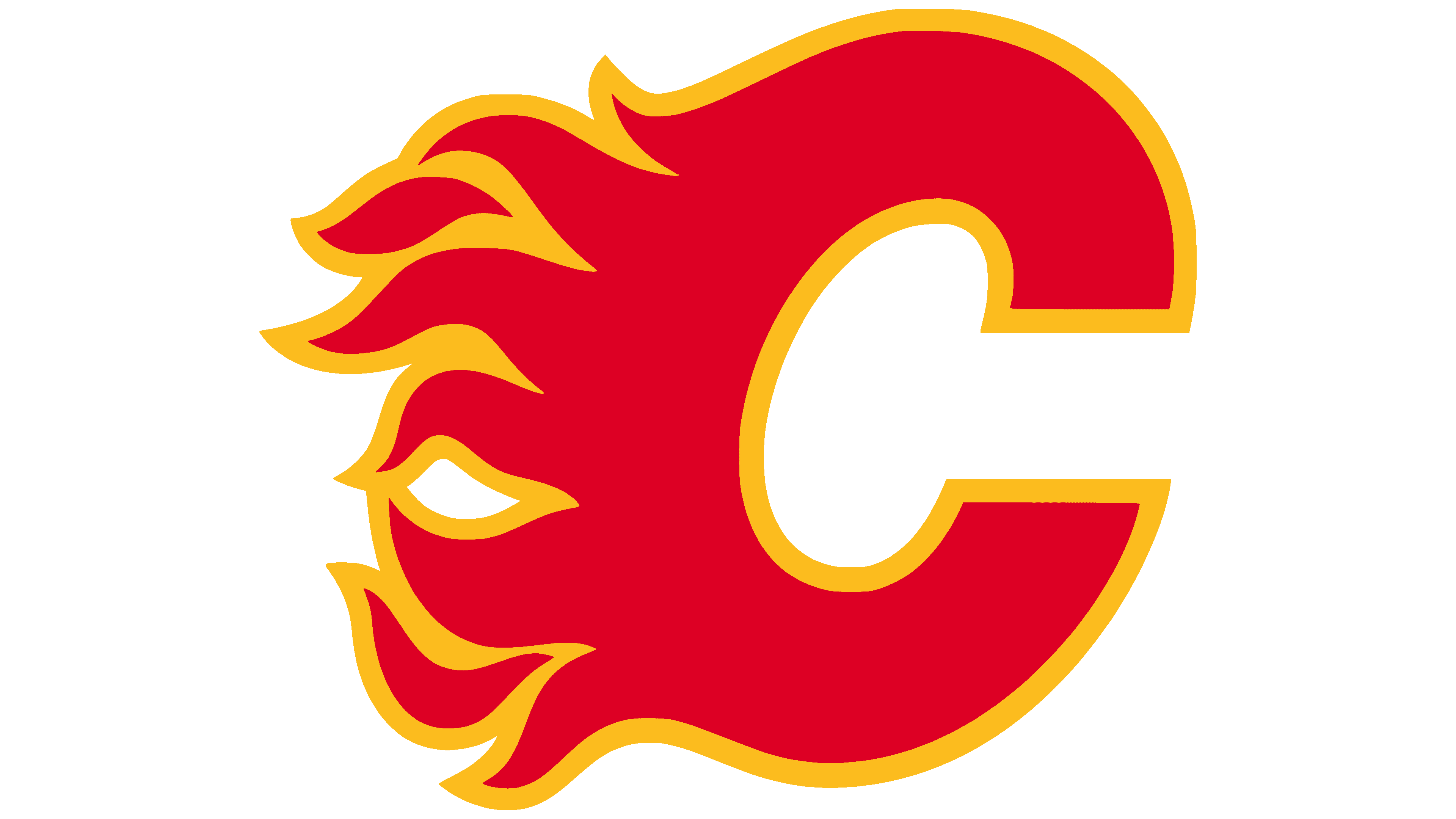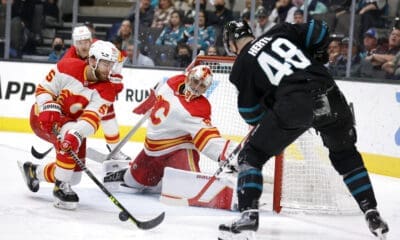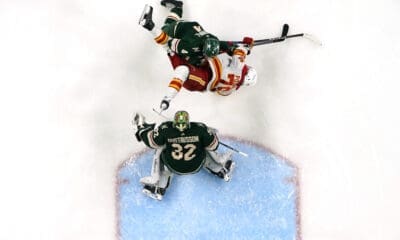Calgary Flames
The Alluring Mystery of the College Free Agent

Inspired by this post by Parallex, I've decided to attempt to tackle the mystery of the college free agent.
Disclaimer: I am not going to pretend for a second that I know the first thing about NCAA hockey, so please try to forgive any ignorance or gross misunderstandings on my part and feel free to correct me.
The risk of signing an undrafted college free agent is virtually the same as that of signing any other established NHL free agent, with the exception of, depending on the age of the player in question, potential for future development. At any rate, the risks are certainly equal to those of drafting a player based on his numbers in high school or junior hockey–it’s no guarantee that that player is going to replicate that success at the NHL level. Unless you’re dealing with a special player like Sidney Crosby or Alex Ovechkin, you’re probably looking at about the same time frame for player development, if not less because of the age of most college players signed by NHL teams tends to range from 20-24 as opposed to 18 or 19 for drafted players.
The success of undrafted college players signed to NHL contracts as UFAs has been well documented. Martin St. Louis and Dan Boyle both won a Stanley Cup with the Lightning and Brian Rafalski has three Cups to his name with the Devils and Red Wings. Chris Kunitz, Dustin Penner, and Andy McDonald were all important contributors to Anaheim’s 2007 Cup victory, and Kunitz also won a championship with the Penguins last season. Although Bryan Murray was largely responsible for building that winning Ducks team, Brian Burke seems to have carried an affinity for college free agents into his tenure with the Leafs, having already signed Tyler Bozak, Viktor Stalberg, and Christian Hanson to entry-level deals. Rene Bourque was also an undrafted college player before eventually signing with the Blackhawks.
Despite the successes of these players, David Shoalts suggests that
the importance of college free agency is dwindling.
While teams are still hoping to sign the next Andy McDonald or Chris Kunitz or Mason Raymond or Tyler Bozak, there will be fewer college free agents because more and more Canadian and U.S. 18-year-olds, headed for the National Collegiate Athletic Association instead of the Canadian junior ranks, are being taken in the NHL entry draft.
NHL insiders say last year’s crop of college free agents, from which the Toronto Maple Leafs grabbed Bozak and Christian Hanson and the New York Rangers got Matt Gilroy, was much stronger.
…In the 2004 entry draft, the last one before the change in eligibility, 6.2 per cent of the players chosen were from high schools…
The only anomaly was for players already in the NCAA when they were drafted. In 2004, that was 9.6 per cent, and in 2009 it was down to 3.3, but the total number of players drafted is less as well. It could also be a function of the quality of players available. In any event, many players in the NCAA were drafted in high school as 18-year-olds.
That year, Blake Wheeler was drafted fifth overall and in the following years, current NHLers Jack Johnson, Erik Johnson, Jonathan Toews, Patrick Kane, and James van Riemsdyk were already with NCAA teams or were incoming recruits when they were all drafted in the top three.
There is no consensus No. 1 prize in this year’s crop. The San Jose Sharks have already signed Princeton forward Cam MacIntyre. Others considered to be of interest are forwards Jarod Palmer (Miami of Ohio), Casey Wellman (Massachusetts-Amherst), Bobby Butler (New Hampshire) and Sebastien Stalberg (Vermont), the younger brother of Leafs rookie Viktor.
That list continues to dwindle, as Casey Wellman was signed by the Wild earlier this week.
The Flames currently have four prospects playing in the NCAA, none of whom have exactly lit it up this season. Their top-rated college prospect is Aaron Marvin, who is ranked seventeenth out of twenty of the Flames’ top prospects by Kent at Hockey’s Future. This lack of success could be part of the reason why the Flames have chosen to go the junior or European route at the draft in recent years, as suggested by Kent here.
Given the Flames' limited cap space, the almost non-existent pool of young, viable unrestricted free agents available this summer, and the fact that some of their best prospects are probably still a few years away from being NHL-ready, it couldn't hurt to consider taking a chance on one of these guys. With all the scouts the Flames have, you'd think some of them could make the trip to scope out a few of these players and maybe attend a frat party or two. My money's on Warrener.
Further reading: More college free agents garnering NHL interest, NCAA players to watch as per Central Scouting.
by Hayley Mutch








